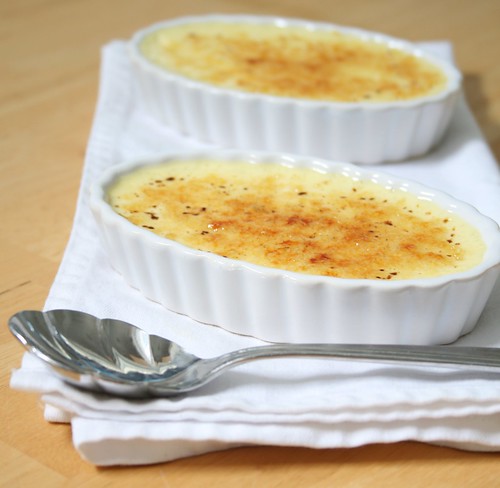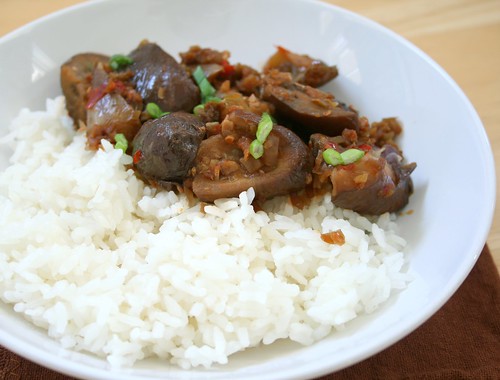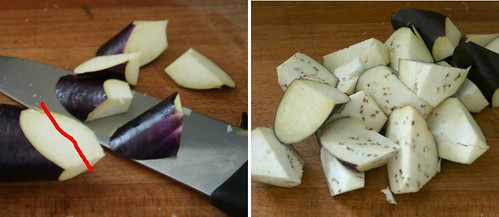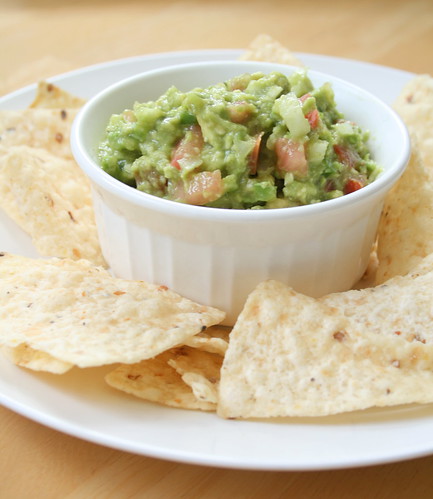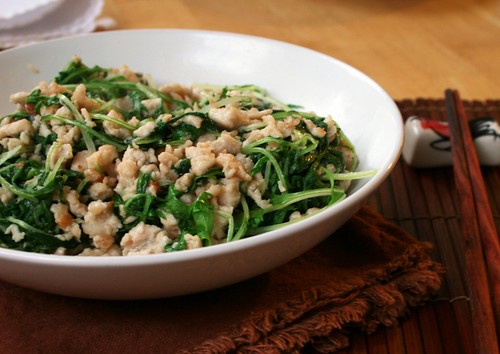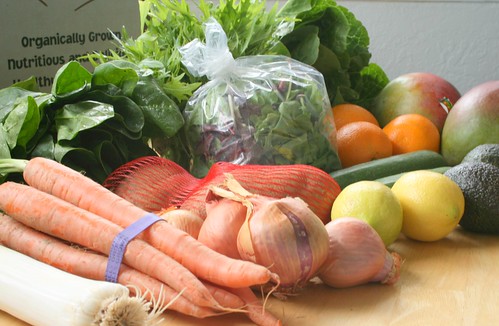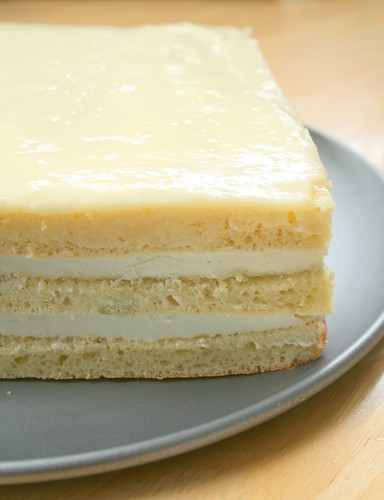
Earlier this month I volunteered to bake a cake for a birthday party. I was trying to decide what kind of cake to make but it just so happened that our cohosts this month, Lis and Ivonne, founders of the DB, and Fran and Shea chose an opera cake for the group's monthly challenge. How perfect! The traditional opera cake consists of three layers of joconde, almond sponge/genoise, soaked with a strong coffees syrup, coffee buttercream, and finished with a shiny, dark chocolate glaze.
But this month's challenge was extra special and it wasn't going to be just any opera cake, this opera cake is a tribute to Barbara, fellow food blogger, honorary Daring Baker, cancer survivor, and host of one of the biggest food blogging events, A Taste of Yellow for LIVESTRONG Day. I was so bummed I missed the deadline for A Taste of Yellow this year so I'm very grateful for a second chance to give tribute to not only Barbara but all cancer survivors, those currently battling cancer, and everyone that has been affected by this disease. In honor of Barbara's A Taste of Yellow event, the main rule for this challenge was to keep everything light colored, no browns or dark colors. Instead of the traditional chocolate glaze, we were using a white chocolate glaze. Immediately, I thought of pairing the white chocolate with green tea because that combo is one of my absolute favorites for desserts and the light green of matcha buttercream is very Spring.
Believe it or not, I actually finished the challenge way before the posting date this month. Yay for me! Too bad I can't say the same about posting on time. Oh well, baby steps people, baby steps. This month I had a different deadline to work with, the day of the party. And like a professional procrastinator, I finished the cake with literally minutes to spare before I had to leave for the party.
Okay, moving on to the cake. I kept the joconde plain adding just a little almond extract, made a green tea soaking syrup, a green tea buttercream, and finally the white chocolate glaze (I skipped the mousse because I'm lazy). The plan was to bake the cake and make the syrup the night before then make the buttercream and assemble the cake the next morning (the party being at noon). But whenever you make a plan, something always goes wrong, that's just how it goes right? I ran into an issue with the buttercream; after adding three sticks of butter to the egg yolk syrup mixture I was left with runny buttery glop that couldn't hold a peak to save its life. With only a three hours left, I had to make a new buttercream but this time I played it safe and went with a Swiss buttercream (Dorie's recipe), which I'm more comfortable with. But I was running out of time and my butter needed to be at room temperature and I had just taken it out of the fridge. After some frantic instant messaging to my friend telling him of my failures as a French buttercream maker, he suggested sitting on the cold butter (not seriously of course... I don't think). Gives a new meaning to the word buttercream eh? Anyway, the butter eventually softened enough (no sitting required) to make the buttercream and luckily, the second batch of buttercream turned out perfectly, melt-on-the-tongue ethereal. With 30 minutes left to put the cake together, I haphazardly assembled the joconde layers, brushed on the syrup, spread on the buttercream, and finally poured on the white chocolate glaze, which thank god did not seize because it was my last bit of my white chocolate. I didn't have time to make any decorations or even trim the messy looking edges. I snapped a few photos then ran off to catch the bus. I feel a little embarrassed about my naked cake. No spiffy decorations here but I've seen some drop dead gorgeous decorations this month. Man, this group never ceases to amaze me. So make sure to check out the DB Blogroll to see some beautiful music notes, g clefs, sexy legs, and a gorgeous edible rose.
Now I'm feeling kinda lazy again (actually, I've just been lazy recently, as you can see from the lack of posting) so instead of writing out the recipe, I will link to it because it is veeerrrry loooonggg.
Recipe:
Daring Bakers' Opera Cake
My notes:
- Almond meal can be really expensive but luckily it can be made very easily at home. If you are starting from raw almonds, first blanch them and squeeze them out of the skins (how to blanch almonds). Then be sure to grind them very fine in the food processor. Add a tablespoon or two of the flour from the recipe with the almonds to soak up some of the oils that the almonds release. It will start to get clump so make sure to stop the food processor once in a while and loosen up the mixture. Do not overprocess to almond butter.
- Dorie's buttercream recipe is the same one we used for the March Challenge, Perfect Party Cake. Instead of the lemon juices addition at the end, I dissolved some matcha powder in a few tablespoons of hot water (ideally 180 deg F), then cooled that to room temperature, then slowly added that to the buttercream in the end.

